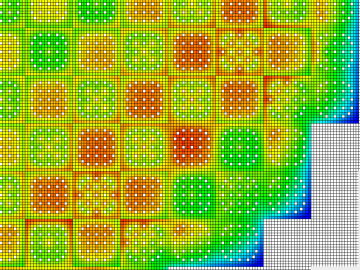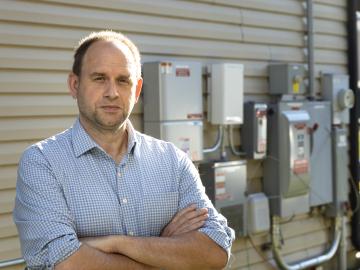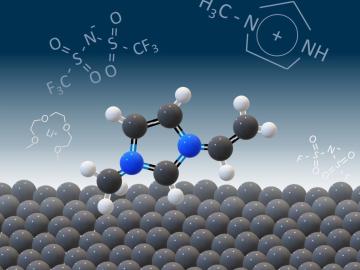
Filter News
Area of Research
- Advanced Manufacturing (1)
- Biology and Environment (9)
- Computer Science (2)
- Energy Science (24)
- Energy Sciences (1)
- Fusion and Fission (4)
- Fusion Energy (4)
- Isotopes (3)
- Materials (14)
- Materials for Computing (5)
- National Security (3)
- Neutron Science (10)
- Nuclear Science and Technology (19)
- Nuclear Systems Modeling, Simulation and Validation (1)
- Supercomputing (21)
News Topics
- (-) Biomedical (22)
- (-) Clean Water (2)
- (-) Energy Storage (21)
- (-) Exascale Computing (3)
- (-) Grid (7)
- (-) Molten Salt (2)
- (-) Nuclear Energy (31)
- (-) Space Exploration (2)
- (-) Summit (17)
- 3-D Printing/Advanced Manufacturing (28)
- Advanced Reactors (14)
- Artificial Intelligence (8)
- Big Data (11)
- Bioenergy (13)
- Biology (5)
- Biotechnology (2)
- Buildings (1)
- Chemical Sciences (5)
- Composites (1)
- Computer Science (39)
- Coronavirus (25)
- Critical Materials (2)
- Cybersecurity (4)
- Environment (29)
- Frontier (1)
- Fusion (13)
- High-Performance Computing (3)
- Isotopes (8)
- Machine Learning (8)
- Materials (2)
- Materials Science (37)
- Mathematics (2)
- Mercury (1)
- Microscopy (8)
- Nanotechnology (17)
- National Security (2)
- Neutron Science (35)
- Physics (13)
- Polymers (7)
- Quantum Science (14)
- Security (3)
- Transportation (15)
Media Contacts

Two staff members at the Department of Energy’s Oak Ridge National Laboratory have received prestigious HENAAC and Luminary Awards from Great Minds in STEM, a nonprofit organization that focuses on promoting STEM careers in underserved

The inside of future nuclear fusion energy reactors will be among the harshest environments ever produced on Earth. What’s strong enough to protect the inside of a fusion reactor from plasma-produced heat fluxes akin to space shuttles reentering Earth’s atmosphere?

A team led by Oak Ridge National Laboratory developed a novel, integrated approach to track energy-transporting ions within an ultra-thin material, which could unlock its energy storage potential leading toward faster charging, longer-lasting devices.

It’s a new type of nuclear reactor core. And the materials that will make it up are novel — products of Oak Ridge National Laboratory’s advanced materials and manufacturing technologies.

As CASL ends and transitions to VERA Users Group, ORNL looks at the history of the program and its impact on the nuclear industry.

Pick your poison. It can be deadly for good reasons such as protecting crops from harmful insects or fighting parasite infection as medicine — or for evil as a weapon for bioterrorism. Or, in extremely diluted amounts, it can be used to enhance beauty.

Combining expertise in physics, applied math and computing, Oak Ridge National Laboratory scientists are expanding the possibilities for simulating electromagnetic fields that underpin phenomena in materials design and telecommunications.

Joe Hagerman, ORNL research lead for buildings integration and controls, understands the impact building technology innovations can have during times of crisis. Over a decade ago, he found himself in the middle of one of the most devastating natural disasters of the century, Hurricane Katrina.

Scientists seeking ways to improve a battery’s ability to hold a charge longer, using advanced materials that are safe, stable and efficient, have determined that the materials themselves are only part of the solution.

After its long journey to Mars beginning this summer, NASA’s Perseverance rover will be powered across the planet’s surface in part by plutonium produced at the Department of Energy’s Oak Ridge National Laboratory.


